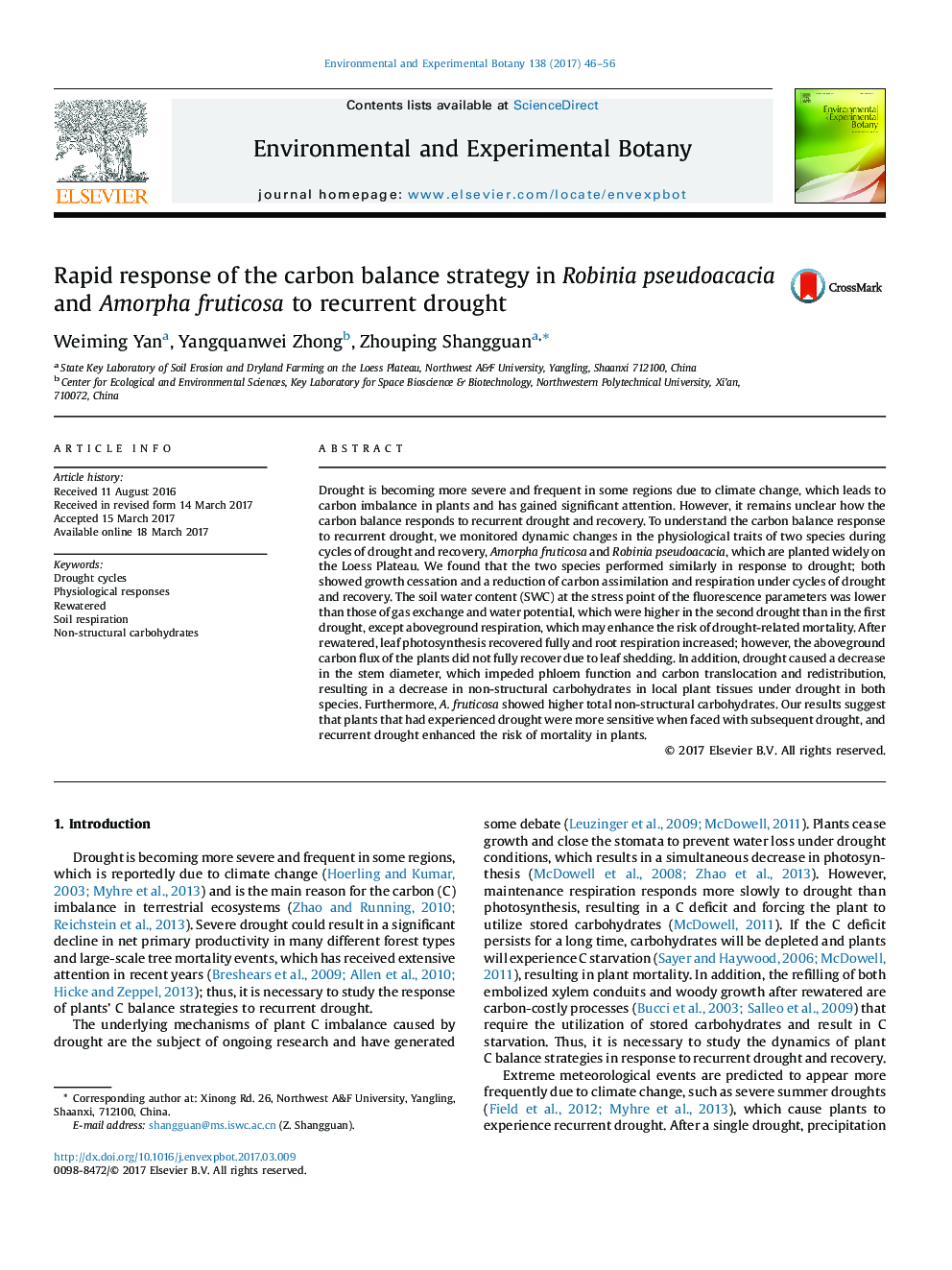| کد مقاله | کد نشریه | سال انتشار | مقاله انگلیسی | نسخه تمام متن |
|---|---|---|---|---|
| 5766663 | 1628039 | 2017 | 11 صفحه PDF | دانلود رایگان |
- Carbon balance of two species was monitored under drought and recovery.
- The stress point was advanced in the second drought cycle.
- Prolonged drought impeded phloem function, carbon translocation and redistribution.
- Both showed similar non-structural carbohydrate distribution during drought cycles.
Drought is becoming more severe and frequent in some regions due to climate change, which leads to carbon imbalance in plants and has gained significant attention. However, it remains unclear how the carbon balance responds to recurrent drought and recovery. To understand the carbon balance response to recurrent drought, we monitored dynamic changes in the physiological traits of two species during cycles of drought and recovery, Amorpha fruticosa and Robinia pseudoacacia, which are planted widely on the Loess Plateau. We found that the two species performed similarly in response to drought; both showed growth cessation and a reduction of carbon assimilation and respiration under cycles of drought and recovery. The soil water content (SWC) at the stress point of the fluorescence parameters was lower than those of gas exchange and water potential, which were higher in the second drought than in the first drought, except aboveground respiration, which may enhance the risk of drought-related mortality. After rewatered, leaf photosynthesis recovered fully and root respiration increased; however, the aboveground carbon flux of the plants did not fully recover due to leaf shedding. In addition, drought caused a decrease in the stem diameter, which impeded phloem function and carbon translocation and redistribution, resulting in a decrease in non-structural carbohydrates in local plant tissues under drought in both species. Furthermore, A. fruticosa showed higher total non-structural carbohydrates. Our results suggest that plants that had experienced drought were more sensitive when faced with subsequent drought, and recurrent drought enhanced the risk of mortality in plants.
Journal: Environmental and Experimental Botany - Volume 138, June 2017, Pages 46-56
